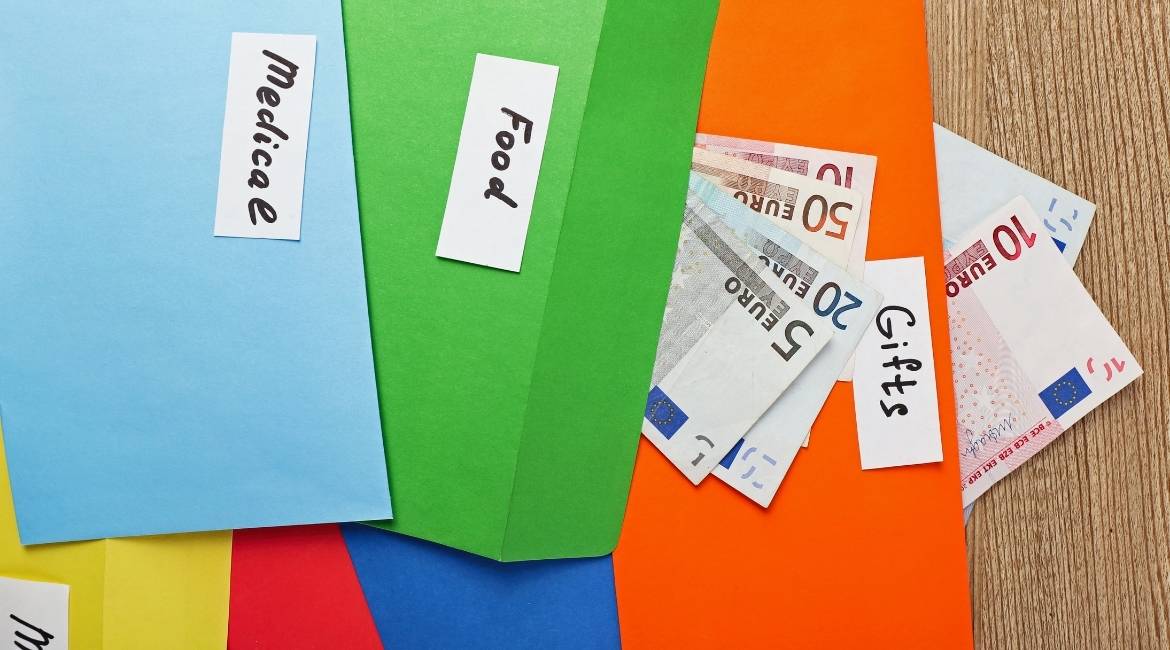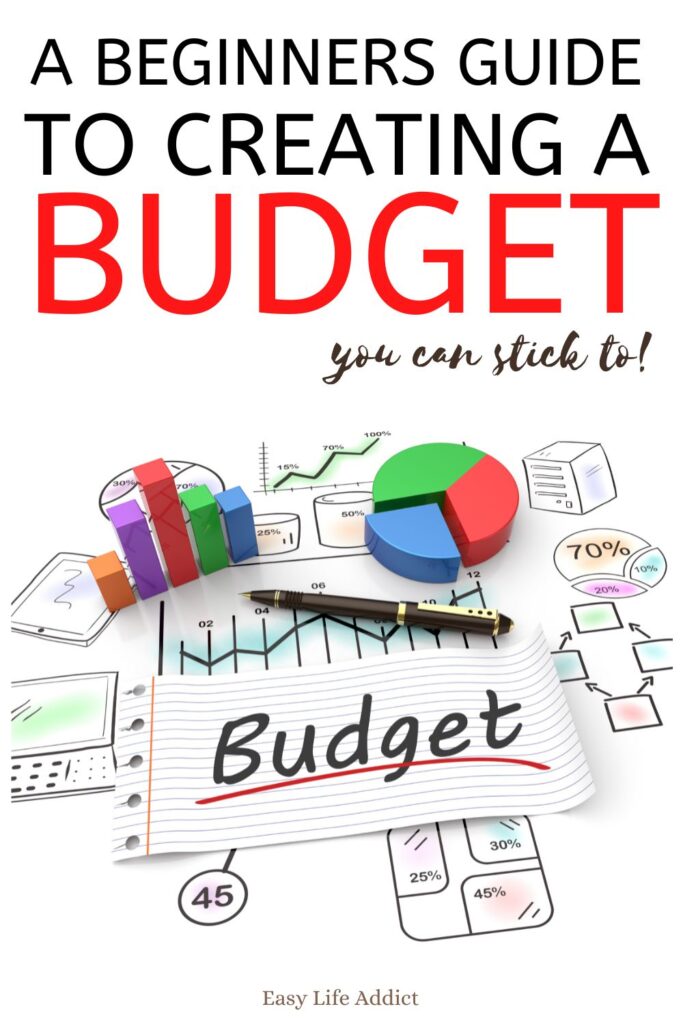How to Create a Budget, a 6-Step Beginners Guide!
Are you looking to get your finances in order but need help knowing where to start? A budget is a great way to get a handle on your money and start saving for your future. Creating a budget can seem daunting, but with our easy step-by-step guide, you’ll be on your way to financial freedom in no time. Read on to learn how to create a budget that works for you and your family.
This post may contain affiliate links. That means that if you click on a link and purchase something I recommend, I will receive a small commission at no extra cost to you. As an Amazon Associate, I earn from qualifying purchases. This helps keep my website up and running and is very appreciated. Thank you for your support! You can read my full disclosure policy here.
What is a Budget?

A budget is an important tool that can help you take control of your finances and achieve your financial goals. When creating a budget, you will need to track your income and expenses to see where your money is going. This will allow you to identify areas where you can reduce spending and save more money.
A budget can also help you to stay out of debt and make wise choices with your money. It will give you a clear picture of your financial situation and help you to make smart choices with your money. With a budget in place, you will be well on your way to financial freedom.
How to Create a Budget in 6 Easy Steps
Creating a budget is easier than it sounds. In reality, it’s pretty simple and involves only three basic routines:
Track what you earn and what you spend.
Work to keep the second number lower than the first.
Lather, rinse, and repeat each month.
Unfortunately, just because budgeting is simple doesn’t mean it’s easy. Many people are daunted at the thought of gathering all their financial information together, and the process can also be quite overwhelming.
Thankfully, despite reports to the contrary, starting a budget from scratch can be smooth and easy. Here’s how you can create a straightforward budget that works for you.
There are lots of ways to create a budget. You can use online apps and spreadsheets or simply pen and paper. If you are serious about making a budget and sticking to it, pen and paper is probably the best option. Seeing something written down on paper tends to feel much more realistic and serious, prompting you to pay more attention. However, you can use whatever option you find easiest.
Before you start, gather all your financial records from the last three months. This includes all bank and credit card statements and any receipts. Grab a pen and a notebook or paper.
Step 1: Calculate Your Monthly Income:
The first step in creating a budget is calculating your monthly income.
Write a list of all your income, including everything, no matter how small. This step is crucial as you will deduct your outgoings from this.
Tip: If your monthly income is inconsistent, find your average from the last three months and use that instead. To find your average, add up the last three months’ income and then divide by 3.
Once you have all your income amounts, write them down in a list and add them together.
For example:
Income:
Salary £1200
Side income £300
Total: £1500
Step 2: Add up Your Fixed Essential Monthly Expenses:
Next, you need to make a list of all your essential outgoings.
Essential outgoings are expenses you must pay each month, such as rent, mortgage, utilities and living expenses.
Again, if some expenses, such as heating bills, are different each month, find the average and use that instead. However, be sure to be as accurate as possible; otherwise, your budget won’t be correct and could become unrealistic.
For example:
Essential expenses
Rent £500
Water rates £30
Gas £30
Electric £40
Council tax £100
Groceries £100
Transport expenses £50
Total £850
Step 3: Set Financial Goals:

Before moving on to the next step, it’s important to set your financial goals. Why do you want to set up a budget in the first place? Is it to save for something special, a house deposit, a new car, or pay off debt?
Think about the time frame in which you want to achieve these goals. Is it six months, a year or a longer time frame? Once you know how much you need to save, work out how much you are willing to save each month to achieve this goal.
Add this amount to your essential expenses as per the example:
Essential expenses:
Rent £500
Water rates £30
Gas £30
Electric £40
Council tax £100
Groceries £100
Transport expenses £50
Emergency fund £200
Car fund £200
Total : £1250
Step 4: Add up Non-Essential Monthly Expenses:
Now, you need to add up all the non-essential monthly expenses.
These are all the monthly expenses you pay for that you don’t necessarily need. Examples include entertainment, eating out, holidays, clothes, and personal items.
I’m not saying that we should all do without these items, but these expenses can be adjusted if needed to achieve our personal goals.
Once you have all your non-essential expenses, add them to the outgoings total like in the example below:
All expenses:
Rent £500
Water rates £30
Gas £30
Electric £40
Council tax £100
Groceries £100
Transport expenses £50
Emergency fund £200
Car fund £200
Hair and beauty £50
Clothing £150
Night outs £200
Total: £1650
Step 5: Subtract Your Expenses from your Total Income:
The final part is to subtract your expenses from your total income.
If the remaining figure is positive then you earn more money than you spend. This means you are in a really good financial position. You will be able to easily save enough money each month to achieve your financial goals. You could also adjust your savings to save more each month and reach your goals quicker!
If you break even, it means you earn just enough money to pay for all your expenses and save towards your financial goals. However, it may still be worth adjusting your non-essential expenses to give yourself a financial buffer.
If the remaining figure is negative, you spend more than you earn. This means you are not in a good financial position and are unlikely to reach your financial goals. However, depending on the amount, you could reduce the amount you would like to save each month or spend less on non-essential expenses.
If you are serious about reaching your personal goals and becoming financially secure, I recommend trying to reduce your non-essential expenses. This doesn’t mean that you need to stop treating yourself; you could just cut down, buy cheaper options, or have less expensive holidays.
Step 6: Implement, Monitor and Adjust:
Once you have finalised your budget, all that is left is to implement, monitor and adjust.
It may take a while to get used to sticking to a budget. However, if you are serious about achieving your financial goals, staying on track is essential.
Implementing your new budget isn’t just about sticking to your new spending limits. You should also try to track all your spending, no matter how small. This way, you can identify weak spots and adjust your budget accordingly.
How to Stick to a Budget

Anyone who has tried to stick to a budget knows it can be challenging. There are so many temptations to spend money on, and it can be difficult to resist the urge to splurge on a new outfit or a night out with friends. However, some strategies can help you stay on track.
First, it is crucial to set realistic goals. If you try to slash your spending too dramatically, you are likely to feel deprived and discouraged. Instead, focus on making small changes that you can sustain over time. For example, you might start by cutting back on impulse purchases or setting a weekly budget for entertainment.
Another way of sticking to a budget is by using the envelope method, where you allocate a certain amount of cash for each category and put it in an envelope labelled with that category. That way, when the money is gone, you know you’ve reached your limit.
Finally, one of the most important things you can do is to give yourself some flexibility. If you blow your budget one week, don’t beat yourself up about it. Just pick up and start again next week. Remember, the goal is not to be perfect; it’s simply to make progress towards becoming more mindful of your spending.
Read more: 18 Simple ways to save money and boost your budget!
Final Thoughts:
Budgeting often gets a bad rap, but it’s all about spending money on the things that matter most to you. The simple process of creating a budget presents a great learning opportunity for you and your family.
Establishing a pattern of monthly budgeting is well worth the effort. Stay committed and follow your plan to obtain the desired results to reach your goal!
If you are still struggling to make or maintain a budget or feel like your finances are slipping out of control, don’t be afraid to ask for help. Many organisations in the UK can help and give advice, such as Citizens Advice, Money Saving Expert, and Step Change.
Remember to check out our related resources for more money-saving tips.
Thanks so much for stopping by; I appreciate everyone who takes the time to read and make it to the end! I have lots of exciting new content in the next few weeks, so make sure you pop back to catch up!









